Themed collection Biological and bio-inspired optics

Quo vadis biophotonics? Wearing serendipity and slow science as a badge of pride, and embracing biology
The field of ‘biological and bio-inspired optics’ has led to a solid understanding of the materials properties of photonic and nanostructured biological materials. Future progress may result from a greater focus on living tissue and biology.

Faraday Discuss., 2020,223, 307-323
https://doi.org/10.1039/D0FD00108B
Optical costs and benefits of disorder in biological photonic crystals
We consider fault tolerance with respect to structural colour and disorder in biological photonics. Several systems have been examined to support discussion and enable optical modelling for a description of the optical costs and benefits of structural disorder.

Faraday Discuss., 2020,223, 9-48
https://doi.org/10.1039/D0FD00101E
On the multifunctionality of butterfly scales: a scaling law for the ridges of cover scales
Here, we present a structural analysis of the height and distance of ridges in cover scales of butterfly species from different families.

Faraday Discuss., 2020,223, 195-206
https://doi.org/10.1039/D0FD00038H
Photonic artificial muscles: from micro robots to tissue engineering
We discuss the use of elastomers and combinations of elastomers with cells for (micro) robotics, for photonics, and for biomedical applications.
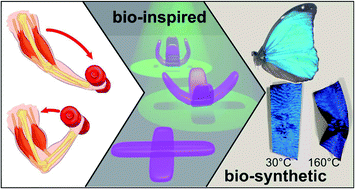
Faraday Discuss., 2020,223, 216-232
https://doi.org/10.1039/D0FD00032A
The red admiral butterfly’s living light sensors and signals
The eye lattice of the red admiral butterfly is revealed by optical retinography.
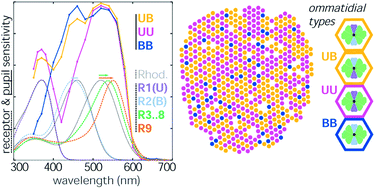
Faraday Discuss., 2020,223, 81-97
https://doi.org/10.1039/D0FD00075B
Conical epidermal cells cause velvety colouration and enhanced patterning in Mandevilla flowers
Conical epidermal cells of Mandevilla sanderi flowers enhance colour contrast by decreasing surface gloss and increasing long-wavelength reflectance.
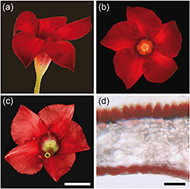
Faraday Discuss., 2020,223, 98-106
https://doi.org/10.1039/D0FD00055H
Biosilica slab photonic crystals as an alternative to cleanroom nanofabrication?
We propose that optical materials produced by diatoms could serve as cost-effective and environmentally friendly alternatives to cleanroom nanofabrication.

Faraday Discuss., 2020,223, 261-277
https://doi.org/10.1039/D0FD00031K
Characterization and possible function of an enigmatic reflector in the eye of the shrimp Litopenaeus vannamei
We characterize a reflector in the eye of the shrimp L. vannamei, which likely acts as a camouflage device to conceal the eye pigments in a largely transparent animal.

Faraday Discuss., 2020,223, 278-294
https://doi.org/10.1039/D0FD00044B
Biophotonics of diversely coloured peacock tail feathers
The diversity of peacock tail feather colours is explained by multilayer modelling.

Faraday Discuss., 2020,223, 49-62
https://doi.org/10.1039/D0FD00033G
Bio-inspired gas sensing: boosting performance with sensor optimization guided by “machine learning”
We analyze the capabilities of natural and fabricated photonic three-dimensional nanostructures as sensors for the detection of different gaseous species.
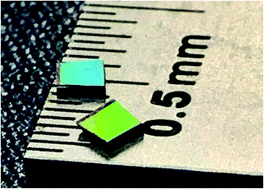
Faraday Discuss., 2020,223, 161-182
https://doi.org/10.1039/D0FD00035C
Scattering of ultraviolet light by avian eggshells
Using Mie scattering modelling and near-UV spectrophotometric measurements of hen, duck and quail eggshells, we propose that Mie backscattering is the origin of the UV response of the eggshells of many other bird species.

Faraday Discuss., 2020,223, 63-80
https://doi.org/10.1039/D0FD00034E
Designing refractive index fluids using the Kramers–Kronig relations
Kramers–Kronig relations can be used to control the interplay of light absorption and dispersion. This concept is demonstrated by using bright commodity food dyes to design non-toxic high refractive index fluids.

Faraday Discuss., 2020,223, 136-144
https://doi.org/10.1039/D0FD00027B
The lesser purple emperor butterfly, Apatura ilia: from mimesis to biomimetics
By selecting various effect pigments, and using the lesser purple emperor butterfly, Apatura ilia, as an exemplar, we have accurately mimicked the butterfly’s iridescence in art.
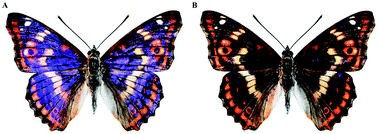
Faraday Discuss., 2020,223, 145-160
https://doi.org/10.1039/D0FD00036A
Disordered wax platelets on Tradescantia pallida leaves create golden shine
Disordered arrangement of wax platelets on Tradescantia leaves increase long wavelength reflectance, contrary to the commonly observed UV-protection mechanism.

Faraday Discuss., 2020,223, 207-215
https://doi.org/10.1039/D0FD00024H
Playing the blues, the greens and the reds with cellulose-based structural colours
Cellulose-based liquid crystalline solutions: diffusion–reaction mechanisms responsible for unexpected sequence of structural colours.
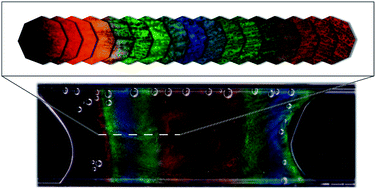
Faraday Discuss., 2020,223, 247-260
https://doi.org/10.1039/D0FD00020E
Integration of bio-responsive silver in 1D photonic crystals: towards the colorimetric detection of bacteria
Colorimetric read-out of a silver/1D photonic crystal upon exposure to E. coli.
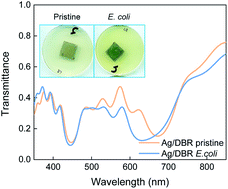
Faraday Discuss., 2020,223, 125-135
https://doi.org/10.1039/D0FD00026D
Optics and photonics in nature: general discussion
Faraday Discuss., 2020,223, 107-124
https://doi.org/10.1039/D0FD90013C
The role of composition: natural materials vs. synthetic composites: general discussion
Faraday Discuss., 2020,223, 295-306
https://doi.org/10.1039/D0FD90017F
The role of structure: order vs. disorder in bio-photonic systems: general discussion
Faraday Discuss., 2020,223, 233-246
https://doi.org/10.1039/D0FD90015J
Bio-inspired optics: general discussion
Faraday Discuss., 2020,223, 183-194
https://doi.org/10.1039/D0FD90014A
About this collection
We are delighted to share with you a selection of the papers associated with a Faraday Discussion on Biological and bio-inspired optics. More information about the event may be found here: http://rsc.li/optics-fd2020. Additional articles will be added to the collection as they are published. The final versions of all the articles presented and a record of the live discussions will be published after the event.
Over the last decade, an increasingly advanced understanding of nature’s light manipulation strategies has allowed scientists and engineers to design novel biologically inspired photonic materials for a wide range of applications. Recent research efforts have uncovered a truly astounding diversity of biological light management mechanisms that rely on various photonic structures, and there is much to be learnt from biological photonic structures for the design of advanced optical materials. Biological optical materials often create desirable synergies between quantum-optical, wave-optical, and ray-optical phenomena through a fine control of material structure and composition across all relevant length scales. Deciphering the origin of such synergies will allow scientists to emulate and improve upon them to solve challenges in optical technology development.
This Faraday Discussion will focus on the most recent developments in this exciting and rapidly evolving field. We will assess what we currently know about nature’s most intriguing light management techniques and review strategies for deriving advantages from this knowledge in bio-inspired materials. More importantly, we will also aim to identify current challenges and opportunities and derive a recommendation of how our field could be moving forward in the years to come. As this topic is very interdisciplinary, with connections spanning from biology and materials science to chemistry and physics, the unique format of the Faraday Discussion will provide a great platform for exchange between the different disciplines and facilitate novel collaborations.